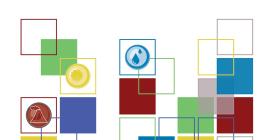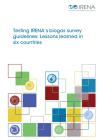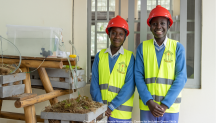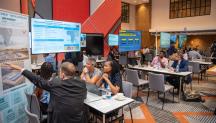

-
-
IRENA (2019), Testing IRENA's biogas survey guidelines: Lessons learned in six countries, International Renewable Energy Agency, Abu Dhabi.
Copied
/-/media/Files/IRENA/Agency/Publication/2019/Nov/IRENA_Biogas_methodology_lessons_learned_2019.pdf
Copied
Testing IRENA’s biogas survey guidelines: Lessons learned in six countries
The report suggests was to improve biogas data collection, including reducing survey costs, improving response rates, simplifying the data collected and using local knowledge about previous projects and programmes.
Newsletter
In 2016, IRENA published a field guide for measuring household biogas capacity and production. During 2017, surveys were implemented in six countries to test the methodologies recommended in that guide. This short report presents the results of those surveys and the lessons learned from implementing the surveys.
The two main challenges with biogas data collection were locating and travelling to the places where biogas plants had been built and, secondly, measuring the capacity of the plants (which are often buried underground). The estimation of gas production from the use of biogas appliances (lights and stoves) was also somewhat difficult, although the results confirmed the validity of the frequently-used assumption that daily gas production is equal to about one-third of digester volume. It was generally quite easy to gather information about other important variables, such as the age of biogas plants and the feedstocks used.
The report suggests how some of these challenges can be overcome. For example, to reduce survey costs and improve response rates, biogas data collection should be integrated into other surveys and biogas development efforts. Measurement difficulties can also be reduced by using local knowledge about previous biogas projects and programmes and simplifying the data that should be collected.
The two main challenges with biogas data collection were locating and travelling to the places where biogas plants had been built and, secondly, measuring the capacity of the plants (which are often buried underground). The estimation of gas production from the use of biogas appliances (lights and stoves) was also somewhat difficult, although the results confirmed the validity of the frequently-used assumption that daily gas production is equal to about one-third of digester volume. It was generally quite easy to gather information about other important variables, such as the age of biogas plants and the feedstocks used.
The report suggests how some of these challenges can be overcome. For example, to reduce survey costs and improve response rates, biogas data collection should be integrated into other surveys and biogas development efforts. Measurement difficulties can also be reduced by using local knowledge about previous biogas projects and programmes and simplifying the data that should be collected.




